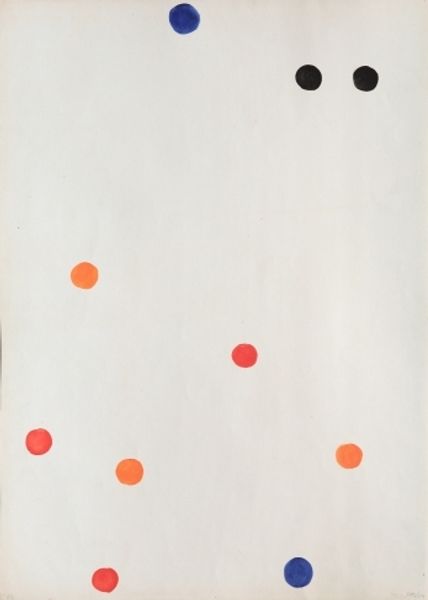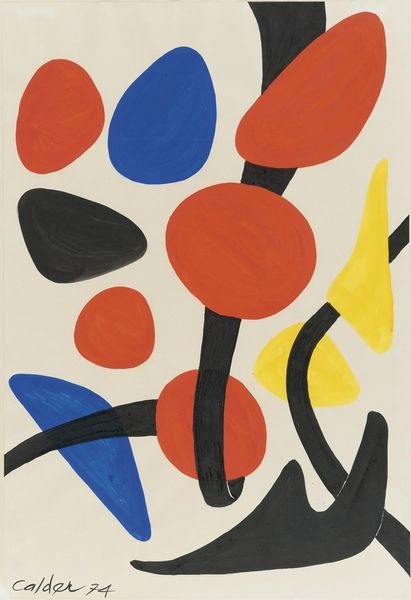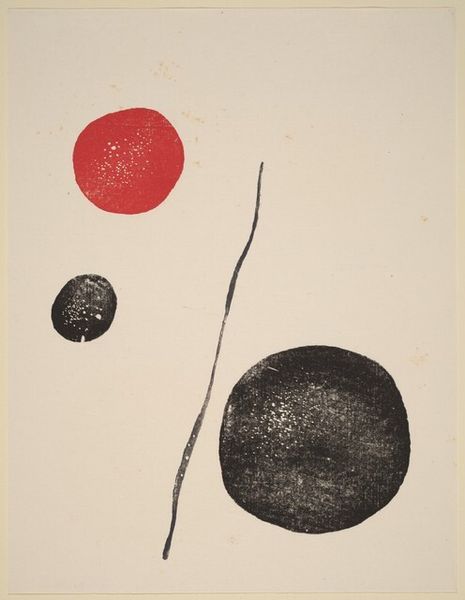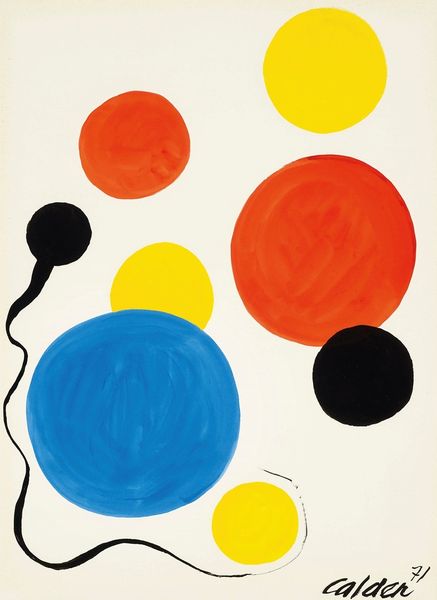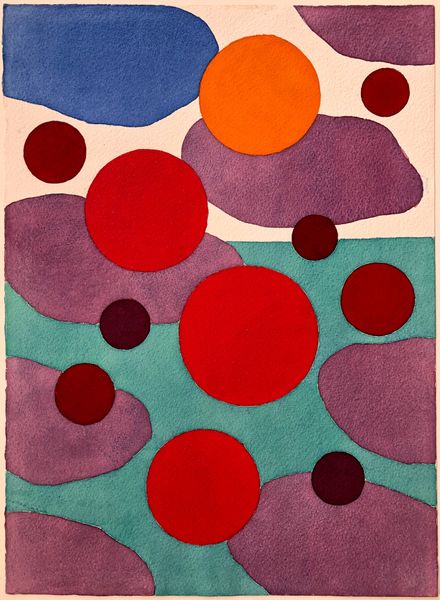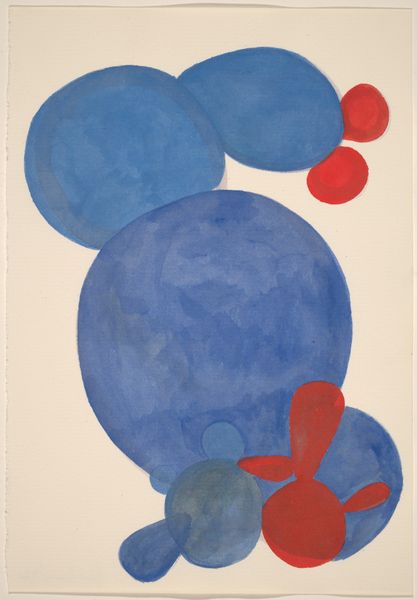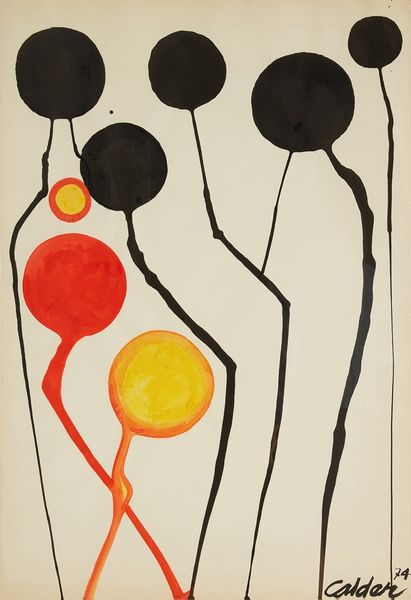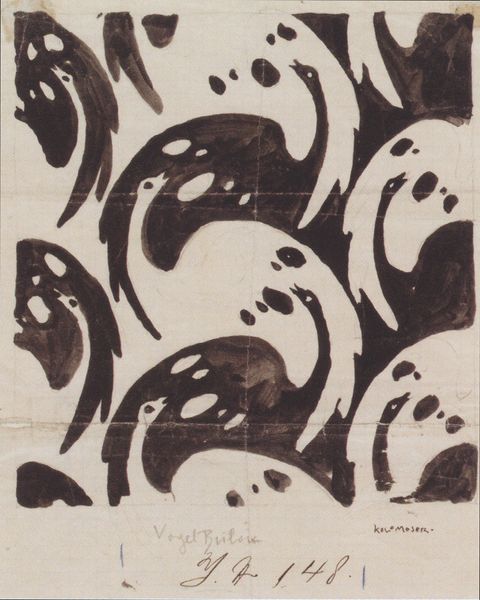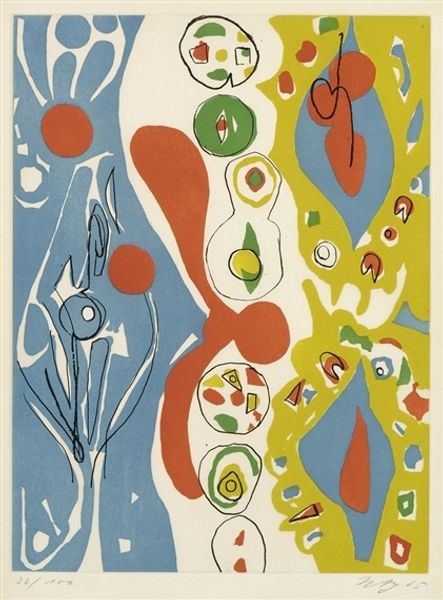
Dimensions: sheet: 28.58 × 22.23 cm (11 1/4 × 8 3/4 in.)
Copyright: National Gallery of Art: CC0 1.0
Curator: This is Donald Sultan's "Green Flowers," a linocut print from 1994. It's a striking composition! Editor: Yes, immediately, I notice the contrast, so bold. The matte black backdrop really makes those flowers jump forward, almost like a stage. They hover there, these unreal blossoms. Curator: Sultan often uses industrial materials in his work, playing with ideas of fragility and strength. Linocut prints can be both bold and delicate. Look at the imperfection in the flower’s edges. It subverts our expectation for what a perfect flower would be. What could that mean? Editor: In many ways, abstraction is present in this kind of floral design, harking back to pop-art's playful engagement with commercial imagery and, arguably, an exploration of consumer culture and its effect on aesthetic representation of flowers. Curator: That tracks. There’s a strong visual language at work. The red circles at the flower's centers can be seen as eyes. In terms of flower symbolism, red often signifies passion. But also think of caution—these flowers grab your attention but might have a warning embedded within the symbolism. They have a potency—a life force. Editor: And the green used here feels so…almost chemical. A pale imitation of nature? It introduces an uncanny sense of manufactured beauty that echoes anxieties around industrialization even within natural spaces, as you say. The use of art, and the politics surrounding art and image. The heavy reliance on popular themes and a turn away from reality. Curator: This echoes throughout visual culture—think back to the early days of color photography when people started hand-tinting color onto black and white prints of flowers and portraiture! Even now, our engagement with visuality means constant engagement with this complex history. Editor: Precisely! These historical considerations add layers of understanding when engaging with these motifs in contemporary art. "Green Flowers", far from being just a pretty picture, sparks dialogue about society's complicated relationship with the natural world and our collective image repertoire. Curator: A testament to how a seemingly simple composition can resonate with our perceptions. I am constantly discovering nuance by working so closely with art and culture every day! Editor: It's really through works such as this where we see how a close study and sustained dialogues unlock even deeper meanings and questions that have been forgotten.
Comments
No comments
Be the first to comment and join the conversation on the ultimate creative platform.
